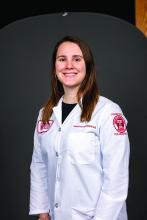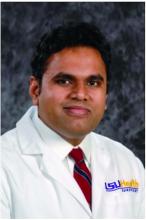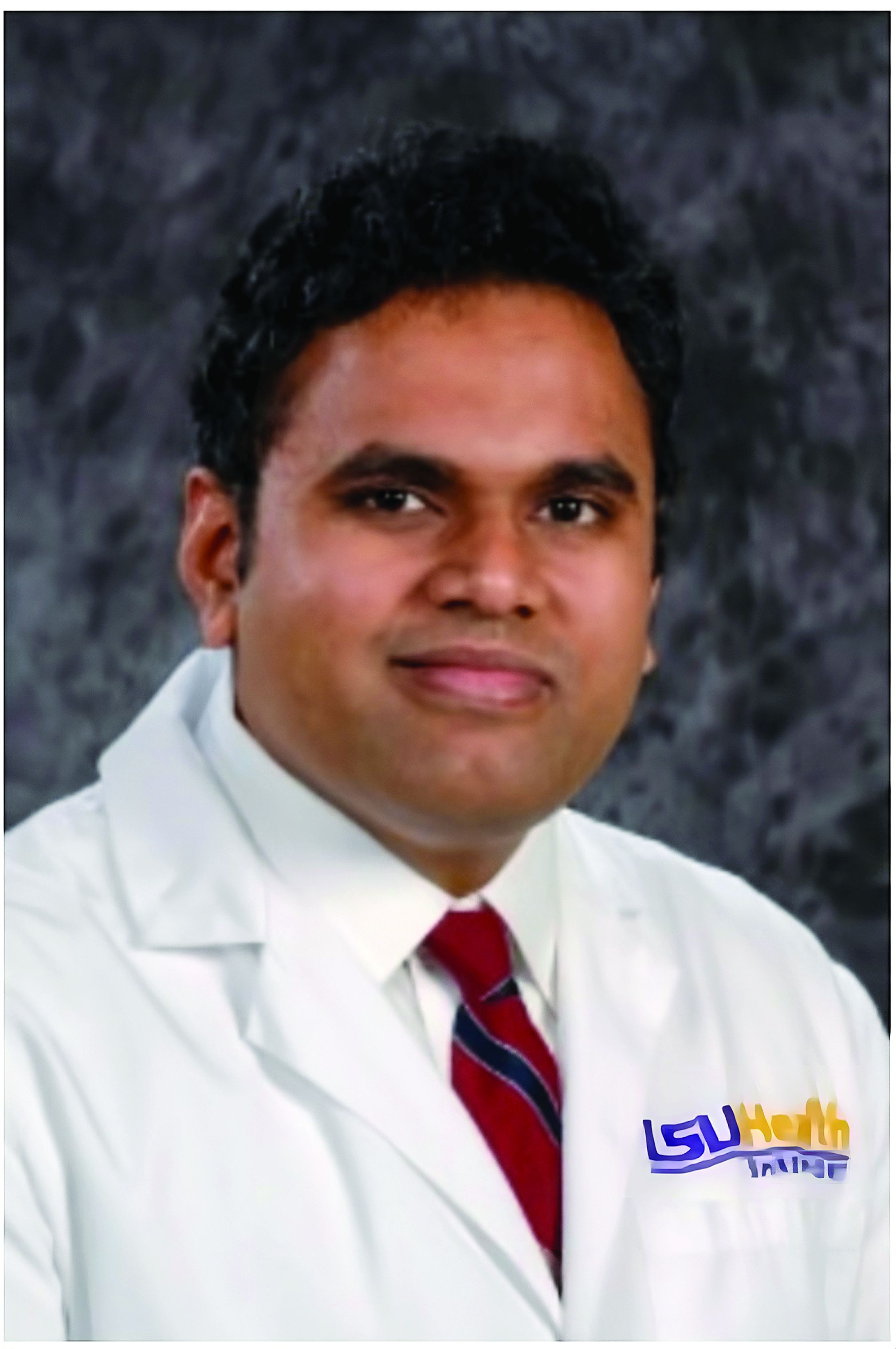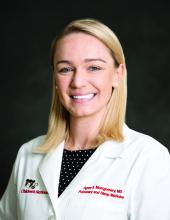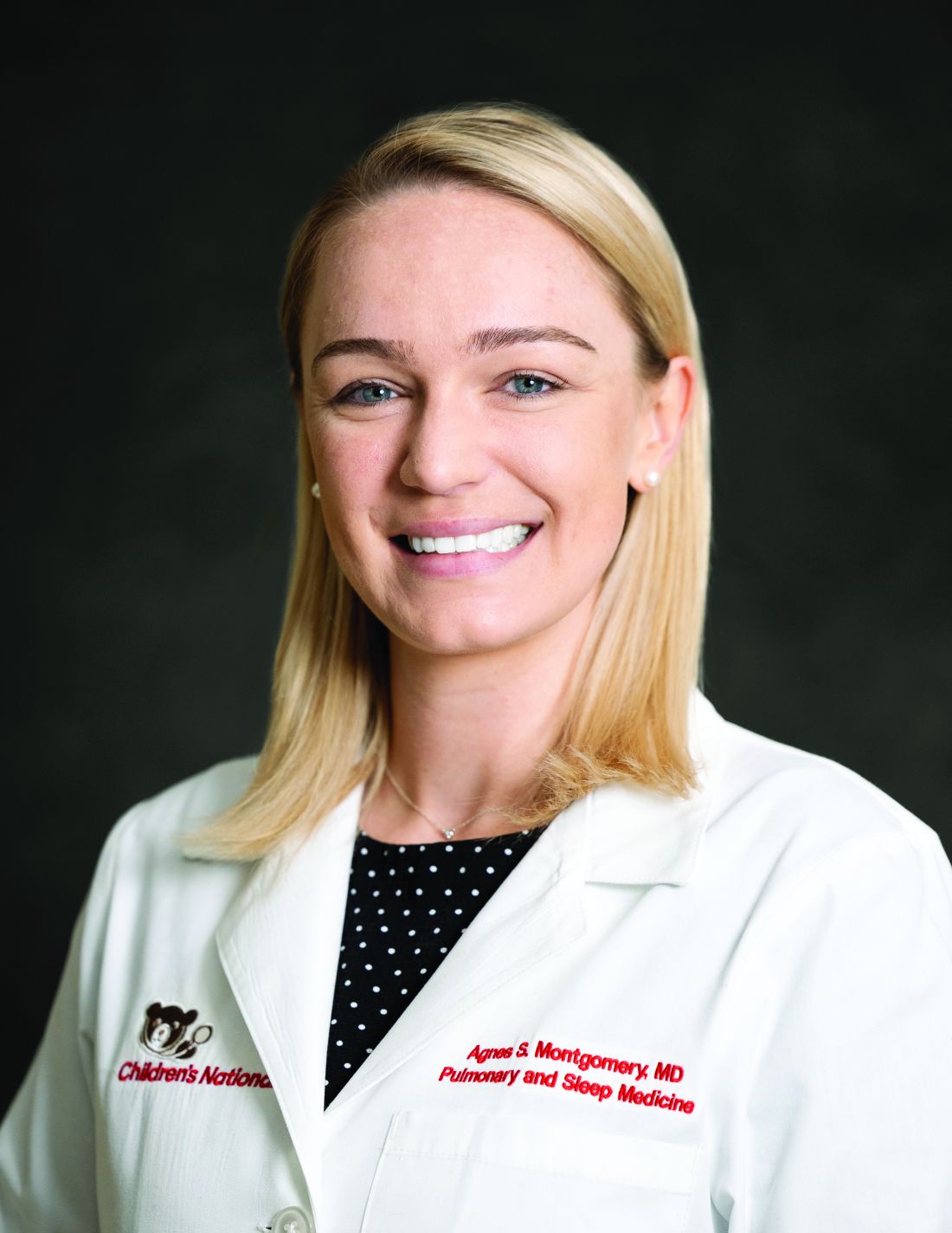User login
Novel Score Predicts Weight Loss With Semaglutide in T2D
TOPLINE:
Patients with both type 2 diabetes (T2D) and obesity who have a lower diabetes severity, as characterized by the individualized metabolic surgery (IMS) scoring system, achieve better weight loss outcomes with semaglutide.
METHODOLOGY:
- Prior studies indicate that semaglutide leads to inferior weight loss outcomes in patients with obesity who have T2D vs those without T2D; however, no study has assessed semaglutide’s weight loss effects as a function of T2D severity.
- The IMS score, which includes four parameters (A1c, < 7%; insulin use; number of T2D medications; and T2D duration), is a validated tool that can categorize T2D severity as mild (0-24.9 points), moderate (25-94.9 points), or severe (95-180 points).
- This retrospective cohort study of patients with obesity and T2D taking ≥ 1 mg of semaglutide investigated weight loss outcomes over 12 months based on IMS scores at baseline as well as changes in glycemic parameters.
- The primary endpoint was weight loss outcomes based on four IMS score quartiles (quartile 1, 12-78 points; quartile 2, 79-107 points; quartile 3, 108-129 points; and quartile 4, 130-172 points) at 12 months after starting semaglutide.
TAKEAWAY:
- Investigators included 297 patients (42% women; mean age, 61.5 years).
- At 12 months, the weight loss outcomes decreased in a stepwise manner as the IMS score quartiles increased from 1 to 4 (total body weight loss %; quartile 1, 8.8; quartile 2, 6.9; quartile 3, 5.7; and quartile 4, 5.0).
- Similarly, patients in the mild to moderate IMS category achieved significantly superior weight loss outcomes than those in the severe category (−8.3% vs −5.5%; P = .006) at 12 months.
- All four individual IMS parameters (ie, being on insulin, having a higher baseline level of A1c, having a longer duration of T2D, and using a greater number of diabetes medications) were independently associated with significantly inferior weight loss outcomes.
- Glycemic parameters, such as fasting blood glucose and A1c levels, did not improve regardless of the IMS severity at baseline.
IN PRACTICE:
“Our findings could help clinicians set informed expectations for weight loss outcomes in patients with severe T2D taking semaglutide; however, it is likely that the cardiometabolic benefits associated with semaglutide treatment in this population far exceed the effect on weight loss,” the authors commented.
SOURCE:
Wissam Ghusn, MD, from the Department of Medicine, Mayo Clinic, Rochester, Minnesota, led this study, which was published online in eClinicalMedicine.
LIMITATIONS:
Due to the retrospective nature of this study, the authors had limited ability to abstract data on all IMS parameters. The presence of predominantly White and male patients in this cohort limited the generalizability of this study’s findings to other external populations. The number of patients in the mild IMS category was extremely low.
DISCLOSURES:
This study did not receive any specific grants, but the involved research staff received payments from the Mayo Clinic. One of the authors declared serving as a consultant, having contracts, and holding equity in various companies.
A version of this article appeared on Medscape.com.
TOPLINE:
Patients with both type 2 diabetes (T2D) and obesity who have a lower diabetes severity, as characterized by the individualized metabolic surgery (IMS) scoring system, achieve better weight loss outcomes with semaglutide.
METHODOLOGY:
- Prior studies indicate that semaglutide leads to inferior weight loss outcomes in patients with obesity who have T2D vs those without T2D; however, no study has assessed semaglutide’s weight loss effects as a function of T2D severity.
- The IMS score, which includes four parameters (A1c, < 7%; insulin use; number of T2D medications; and T2D duration), is a validated tool that can categorize T2D severity as mild (0-24.9 points), moderate (25-94.9 points), or severe (95-180 points).
- This retrospective cohort study of patients with obesity and T2D taking ≥ 1 mg of semaglutide investigated weight loss outcomes over 12 months based on IMS scores at baseline as well as changes in glycemic parameters.
- The primary endpoint was weight loss outcomes based on four IMS score quartiles (quartile 1, 12-78 points; quartile 2, 79-107 points; quartile 3, 108-129 points; and quartile 4, 130-172 points) at 12 months after starting semaglutide.
TAKEAWAY:
- Investigators included 297 patients (42% women; mean age, 61.5 years).
- At 12 months, the weight loss outcomes decreased in a stepwise manner as the IMS score quartiles increased from 1 to 4 (total body weight loss %; quartile 1, 8.8; quartile 2, 6.9; quartile 3, 5.7; and quartile 4, 5.0).
- Similarly, patients in the mild to moderate IMS category achieved significantly superior weight loss outcomes than those in the severe category (−8.3% vs −5.5%; P = .006) at 12 months.
- All four individual IMS parameters (ie, being on insulin, having a higher baseline level of A1c, having a longer duration of T2D, and using a greater number of diabetes medications) were independently associated with significantly inferior weight loss outcomes.
- Glycemic parameters, such as fasting blood glucose and A1c levels, did not improve regardless of the IMS severity at baseline.
IN PRACTICE:
“Our findings could help clinicians set informed expectations for weight loss outcomes in patients with severe T2D taking semaglutide; however, it is likely that the cardiometabolic benefits associated with semaglutide treatment in this population far exceed the effect on weight loss,” the authors commented.
SOURCE:
Wissam Ghusn, MD, from the Department of Medicine, Mayo Clinic, Rochester, Minnesota, led this study, which was published online in eClinicalMedicine.
LIMITATIONS:
Due to the retrospective nature of this study, the authors had limited ability to abstract data on all IMS parameters. The presence of predominantly White and male patients in this cohort limited the generalizability of this study’s findings to other external populations. The number of patients in the mild IMS category was extremely low.
DISCLOSURES:
This study did not receive any specific grants, but the involved research staff received payments from the Mayo Clinic. One of the authors declared serving as a consultant, having contracts, and holding equity in various companies.
A version of this article appeared on Medscape.com.
TOPLINE:
Patients with both type 2 diabetes (T2D) and obesity who have a lower diabetes severity, as characterized by the individualized metabolic surgery (IMS) scoring system, achieve better weight loss outcomes with semaglutide.
METHODOLOGY:
- Prior studies indicate that semaglutide leads to inferior weight loss outcomes in patients with obesity who have T2D vs those without T2D; however, no study has assessed semaglutide’s weight loss effects as a function of T2D severity.
- The IMS score, which includes four parameters (A1c, < 7%; insulin use; number of T2D medications; and T2D duration), is a validated tool that can categorize T2D severity as mild (0-24.9 points), moderate (25-94.9 points), or severe (95-180 points).
- This retrospective cohort study of patients with obesity and T2D taking ≥ 1 mg of semaglutide investigated weight loss outcomes over 12 months based on IMS scores at baseline as well as changes in glycemic parameters.
- The primary endpoint was weight loss outcomes based on four IMS score quartiles (quartile 1, 12-78 points; quartile 2, 79-107 points; quartile 3, 108-129 points; and quartile 4, 130-172 points) at 12 months after starting semaglutide.
TAKEAWAY:
- Investigators included 297 patients (42% women; mean age, 61.5 years).
- At 12 months, the weight loss outcomes decreased in a stepwise manner as the IMS score quartiles increased from 1 to 4 (total body weight loss %; quartile 1, 8.8; quartile 2, 6.9; quartile 3, 5.7; and quartile 4, 5.0).
- Similarly, patients in the mild to moderate IMS category achieved significantly superior weight loss outcomes than those in the severe category (−8.3% vs −5.5%; P = .006) at 12 months.
- All four individual IMS parameters (ie, being on insulin, having a higher baseline level of A1c, having a longer duration of T2D, and using a greater number of diabetes medications) were independently associated with significantly inferior weight loss outcomes.
- Glycemic parameters, such as fasting blood glucose and A1c levels, did not improve regardless of the IMS severity at baseline.
IN PRACTICE:
“Our findings could help clinicians set informed expectations for weight loss outcomes in patients with severe T2D taking semaglutide; however, it is likely that the cardiometabolic benefits associated with semaglutide treatment in this population far exceed the effect on weight loss,” the authors commented.
SOURCE:
Wissam Ghusn, MD, from the Department of Medicine, Mayo Clinic, Rochester, Minnesota, led this study, which was published online in eClinicalMedicine.
LIMITATIONS:
Due to the retrospective nature of this study, the authors had limited ability to abstract data on all IMS parameters. The presence of predominantly White and male patients in this cohort limited the generalizability of this study’s findings to other external populations. The number of patients in the mild IMS category was extremely low.
DISCLOSURES:
This study did not receive any specific grants, but the involved research staff received payments from the Mayo Clinic. One of the authors declared serving as a consultant, having contracts, and holding equity in various companies.
A version of this article appeared on Medscape.com.
Roche Blood Test for Lp(a) Designated Breakthrough Device
The Tina-quant Lp(a) RxDx assay, developed by Roche in partnership with Amgen, is designed to identify adults with elevated Lp(a) levels who may benefit from lipid-lowering therapies currently in development.
Lp(a) is a type of lipoprotein that is genetically inherited. Elevated levels have been associated with an increased risk for heart disease, stroke, and other blood vessel diseases.
Worldwide, about 1 in 5 people have high Lp(a) levels that are not significantly affected by lifestyle changes, such as diet and exercise. Elevated Lp(a) is particularly prevalent among women and people of African descent.
Lp(a) testing is “an important tool for clinicians, enabling them to make a more accurate assessment of [cardiovascular] risk, and it is expected to become a part of regular diagnostic testing in the coming years,” Roche said in a news release announcing the breakthrough designation for the Lp(a) blood test.
If approved, the Tina-quant Lp(a) RxDx assay will be available on select Roche cobas platforms, the company reported.
Although low-density-lipoprotein (LDL) cholesterol particles are much more abundant than Lp(a) particles and carry the greatest overall risk for heart disease, on a per-particle basis, atherogenic risk associated with Lp(a) is about six times higher than that associated with LDL cholesterol, a recent study showed.
There currently are no approved pharmacologic therapies to lower Lp(a) levels in the United States, but several hopefuls are in development.
One is zerlasiran (Silence Therapeutics), a short interfering RNA (siRNA) agent, or “gene silencing” therapy, which binds to and temporarily blocks the action of the LPA gene, which encodes for apolipoprotein A, a dominant and rate-limiting component in the hepatic synthesis of the Lp(a) particle.
Treatment with zerlasiran produced significant and sustained reductions in Lp(a) concentrations in adults with elevated Lp(a) in the phase 1 APOLLO trial and the phase 2 ALPACAR-360 trial.
Other siRNA agents in development to lower Lp(a) levels include pelacarsen, lepodisiran, olpasiran, and muvalaplin.
A version of this article appeared on Medscape.com.
The Tina-quant Lp(a) RxDx assay, developed by Roche in partnership with Amgen, is designed to identify adults with elevated Lp(a) levels who may benefit from lipid-lowering therapies currently in development.
Lp(a) is a type of lipoprotein that is genetically inherited. Elevated levels have been associated with an increased risk for heart disease, stroke, and other blood vessel diseases.
Worldwide, about 1 in 5 people have high Lp(a) levels that are not significantly affected by lifestyle changes, such as diet and exercise. Elevated Lp(a) is particularly prevalent among women and people of African descent.
Lp(a) testing is “an important tool for clinicians, enabling them to make a more accurate assessment of [cardiovascular] risk, and it is expected to become a part of regular diagnostic testing in the coming years,” Roche said in a news release announcing the breakthrough designation for the Lp(a) blood test.
If approved, the Tina-quant Lp(a) RxDx assay will be available on select Roche cobas platforms, the company reported.
Although low-density-lipoprotein (LDL) cholesterol particles are much more abundant than Lp(a) particles and carry the greatest overall risk for heart disease, on a per-particle basis, atherogenic risk associated with Lp(a) is about six times higher than that associated with LDL cholesterol, a recent study showed.
There currently are no approved pharmacologic therapies to lower Lp(a) levels in the United States, but several hopefuls are in development.
One is zerlasiran (Silence Therapeutics), a short interfering RNA (siRNA) agent, or “gene silencing” therapy, which binds to and temporarily blocks the action of the LPA gene, which encodes for apolipoprotein A, a dominant and rate-limiting component in the hepatic synthesis of the Lp(a) particle.
Treatment with zerlasiran produced significant and sustained reductions in Lp(a) concentrations in adults with elevated Lp(a) in the phase 1 APOLLO trial and the phase 2 ALPACAR-360 trial.
Other siRNA agents in development to lower Lp(a) levels include pelacarsen, lepodisiran, olpasiran, and muvalaplin.
A version of this article appeared on Medscape.com.
The Tina-quant Lp(a) RxDx assay, developed by Roche in partnership with Amgen, is designed to identify adults with elevated Lp(a) levels who may benefit from lipid-lowering therapies currently in development.
Lp(a) is a type of lipoprotein that is genetically inherited. Elevated levels have been associated with an increased risk for heart disease, stroke, and other blood vessel diseases.
Worldwide, about 1 in 5 people have high Lp(a) levels that are not significantly affected by lifestyle changes, such as diet and exercise. Elevated Lp(a) is particularly prevalent among women and people of African descent.
Lp(a) testing is “an important tool for clinicians, enabling them to make a more accurate assessment of [cardiovascular] risk, and it is expected to become a part of regular diagnostic testing in the coming years,” Roche said in a news release announcing the breakthrough designation for the Lp(a) blood test.
If approved, the Tina-quant Lp(a) RxDx assay will be available on select Roche cobas platforms, the company reported.
Although low-density-lipoprotein (LDL) cholesterol particles are much more abundant than Lp(a) particles and carry the greatest overall risk for heart disease, on a per-particle basis, atherogenic risk associated with Lp(a) is about six times higher than that associated with LDL cholesterol, a recent study showed.
There currently are no approved pharmacologic therapies to lower Lp(a) levels in the United States, but several hopefuls are in development.
One is zerlasiran (Silence Therapeutics), a short interfering RNA (siRNA) agent, or “gene silencing” therapy, which binds to and temporarily blocks the action of the LPA gene, which encodes for apolipoprotein A, a dominant and rate-limiting component in the hepatic synthesis of the Lp(a) particle.
Treatment with zerlasiran produced significant and sustained reductions in Lp(a) concentrations in adults with elevated Lp(a) in the phase 1 APOLLO trial and the phase 2 ALPACAR-360 trial.
Other siRNA agents in development to lower Lp(a) levels include pelacarsen, lepodisiran, olpasiran, and muvalaplin.
A version of this article appeared on Medscape.com.
FDA Approves Nonstimulant Liquid Onyda XR for ADHD
, drug manufacturer Tris Pharma announced in a statement.
The drug is the first approved liquid nonstimulant ADHD medication. The once-daily extended-release oral suspension, with nighttime dosing, can be used alone or as an adjunctive therapy to FDA-approved stimulant medications in pediatric patients 6 years of age or older.
“People with ADHD require a range of therapeutic options that are designed for their individual needs, because not every medication or type of therapy works for every patient,” Ann Childress, MD, a psychiatrist and president of the Las Vegas–based Center for Psychiatry and Behavioral Medicine, said in the release.
“The approval of Onyda XR, the only liquid non-stimulant ADHD medication, with nighttime dosing that shifts the release profile, is a convenient option for patients needing better ADHD control,” she added.
The approval was based on “adequate and well-controlled studies” of the company’s extended-release tablets.
Onyda XR is contraindicated in patients with a history of a hypersensitivity reaction to clonidine.
The medication can cause dose-related decreases in blood pressure and heart rate. Vital signs should be monitored frequently in at-risk patients. In studies with the extended-release tablets, somnolence and sedation were commonly reported adverse reactions. The sympatholytic action of clonidine may worsen sinus node dysfunction and atrioventricular block, especially in patients taking other sympatholytic drugs, the company noted.
Onyda XR should be available in pharmacies in the second half of 2024.
A version of this article appeared on Medscape.com.
, drug manufacturer Tris Pharma announced in a statement.
The drug is the first approved liquid nonstimulant ADHD medication. The once-daily extended-release oral suspension, with nighttime dosing, can be used alone or as an adjunctive therapy to FDA-approved stimulant medications in pediatric patients 6 years of age or older.
“People with ADHD require a range of therapeutic options that are designed for their individual needs, because not every medication or type of therapy works for every patient,” Ann Childress, MD, a psychiatrist and president of the Las Vegas–based Center for Psychiatry and Behavioral Medicine, said in the release.
“The approval of Onyda XR, the only liquid non-stimulant ADHD medication, with nighttime dosing that shifts the release profile, is a convenient option for patients needing better ADHD control,” she added.
The approval was based on “adequate and well-controlled studies” of the company’s extended-release tablets.
Onyda XR is contraindicated in patients with a history of a hypersensitivity reaction to clonidine.
The medication can cause dose-related decreases in blood pressure and heart rate. Vital signs should be monitored frequently in at-risk patients. In studies with the extended-release tablets, somnolence and sedation were commonly reported adverse reactions. The sympatholytic action of clonidine may worsen sinus node dysfunction and atrioventricular block, especially in patients taking other sympatholytic drugs, the company noted.
Onyda XR should be available in pharmacies in the second half of 2024.
A version of this article appeared on Medscape.com.
, drug manufacturer Tris Pharma announced in a statement.
The drug is the first approved liquid nonstimulant ADHD medication. The once-daily extended-release oral suspension, with nighttime dosing, can be used alone or as an adjunctive therapy to FDA-approved stimulant medications in pediatric patients 6 years of age or older.
“People with ADHD require a range of therapeutic options that are designed for their individual needs, because not every medication or type of therapy works for every patient,” Ann Childress, MD, a psychiatrist and president of the Las Vegas–based Center for Psychiatry and Behavioral Medicine, said in the release.
“The approval of Onyda XR, the only liquid non-stimulant ADHD medication, with nighttime dosing that shifts the release profile, is a convenient option for patients needing better ADHD control,” she added.
The approval was based on “adequate and well-controlled studies” of the company’s extended-release tablets.
Onyda XR is contraindicated in patients with a history of a hypersensitivity reaction to clonidine.
The medication can cause dose-related decreases in blood pressure and heart rate. Vital signs should be monitored frequently in at-risk patients. In studies with the extended-release tablets, somnolence and sedation were commonly reported adverse reactions. The sympatholytic action of clonidine may worsen sinus node dysfunction and atrioventricular block, especially in patients taking other sympatholytic drugs, the company noted.
Onyda XR should be available in pharmacies in the second half of 2024.
A version of this article appeared on Medscape.com.
Exercise Improves Sexual Health in Women With Metastatic Breast Cancer
TOPLINE:
, as well as fatigue and overall quality of life in women with metastatic breast cancer, a randomized controlled trial found.
METHODOLOGY:
- Patients with metastatic breast cancer often experience issues with sexual health. Data on the effectiveness of interventions such as exercise are lacking.
- The PREFERABLE-EFFECT trial enrolled 355 women (mean age, 55.4 years) with metastatic breast cancer; 75% had received first- or second-line treatment at enrollment, and 68% had bone metastases.
- Trial participants were randomly allocated to either usual care or a 9-month (twice weekly) supervised exercise program combining aerobic, resistance, and balance exercises. All participants received general exercise advice and an activity tracker.
- Patients were assessed at baseline and 3, 6, and 9 months. Exercise intervention effects were analyzed on an intent-to-treat basis with mixed models.
TAKEAWAY:
- At baseline, most women showed no interest in sexual activity, and 60% were not sexually active. Nearly half (46%) of sexually active women reported no or little sexual enjoyment. Low sexual function was associated with depression and older age.
- Among patients receiving endocrine therapy, 27% reported vaginal pain and 40% reported vaginal dryness during sexual activity.
- The exercise intervention significantly improved sexual functioning (effect size = 0.28; P = .003) and endocrine sexual symptoms (effect size = 0.25; P = .003) at 6 months, and these effects were sustained at 9 months. Sexual enjoyment also appeared to improve in the exercise group, but due to the small sample size, this was not a statistically significant effect.
- Prior results from the trial showed that the exercise program had significant benefits for fatigue and overall quality of life (primary outcomes).
IN PRACTICE:
Patients with metastatic breast cancer “often suffer from sexual health issues and this topic should be addressed by clinicians,” said study presenter Martina Schmidt, PhD, with the German Cancer Research Center, Heidelberg.
“Physical exercise should be a crucial component of the prescription we offer to our patients,” said study discussant Matteo Lambertini, MD, PhD, with University of Genova, Genova, Italy.
SOURCE:
The research (abstract 269MO) was presented at the European Society for Medical Oncology Breast Cancer 2024 Annual Congress.
LIMITATIONS:
Further research needs to be done to determine the optimal role of exercise in addressing symptom burden.
DISCLOSURES:
This research was funded by the European Union’s Horizon 2020 research and innovation program and the National Health and Medical Research Council of Australia. Dr. Schmidt has no relevant conflicts of interest. Dr. Lambertini has financial relationships with various pharmaceutical companies including Roche, Novartis, AstraZeneca, Lilly, Exact Sciences, Pfizer, and others.
A version of this article appeared on Medscape.com.
TOPLINE:
, as well as fatigue and overall quality of life in women with metastatic breast cancer, a randomized controlled trial found.
METHODOLOGY:
- Patients with metastatic breast cancer often experience issues with sexual health. Data on the effectiveness of interventions such as exercise are lacking.
- The PREFERABLE-EFFECT trial enrolled 355 women (mean age, 55.4 years) with metastatic breast cancer; 75% had received first- or second-line treatment at enrollment, and 68% had bone metastases.
- Trial participants were randomly allocated to either usual care or a 9-month (twice weekly) supervised exercise program combining aerobic, resistance, and balance exercises. All participants received general exercise advice and an activity tracker.
- Patients were assessed at baseline and 3, 6, and 9 months. Exercise intervention effects were analyzed on an intent-to-treat basis with mixed models.
TAKEAWAY:
- At baseline, most women showed no interest in sexual activity, and 60% were not sexually active. Nearly half (46%) of sexually active women reported no or little sexual enjoyment. Low sexual function was associated with depression and older age.
- Among patients receiving endocrine therapy, 27% reported vaginal pain and 40% reported vaginal dryness during sexual activity.
- The exercise intervention significantly improved sexual functioning (effect size = 0.28; P = .003) and endocrine sexual symptoms (effect size = 0.25; P = .003) at 6 months, and these effects were sustained at 9 months. Sexual enjoyment also appeared to improve in the exercise group, but due to the small sample size, this was not a statistically significant effect.
- Prior results from the trial showed that the exercise program had significant benefits for fatigue and overall quality of life (primary outcomes).
IN PRACTICE:
Patients with metastatic breast cancer “often suffer from sexual health issues and this topic should be addressed by clinicians,” said study presenter Martina Schmidt, PhD, with the German Cancer Research Center, Heidelberg.
“Physical exercise should be a crucial component of the prescription we offer to our patients,” said study discussant Matteo Lambertini, MD, PhD, with University of Genova, Genova, Italy.
SOURCE:
The research (abstract 269MO) was presented at the European Society for Medical Oncology Breast Cancer 2024 Annual Congress.
LIMITATIONS:
Further research needs to be done to determine the optimal role of exercise in addressing symptom burden.
DISCLOSURES:
This research was funded by the European Union’s Horizon 2020 research and innovation program and the National Health and Medical Research Council of Australia. Dr. Schmidt has no relevant conflicts of interest. Dr. Lambertini has financial relationships with various pharmaceutical companies including Roche, Novartis, AstraZeneca, Lilly, Exact Sciences, Pfizer, and others.
A version of this article appeared on Medscape.com.
TOPLINE:
, as well as fatigue and overall quality of life in women with metastatic breast cancer, a randomized controlled trial found.
METHODOLOGY:
- Patients with metastatic breast cancer often experience issues with sexual health. Data on the effectiveness of interventions such as exercise are lacking.
- The PREFERABLE-EFFECT trial enrolled 355 women (mean age, 55.4 years) with metastatic breast cancer; 75% had received first- or second-line treatment at enrollment, and 68% had bone metastases.
- Trial participants were randomly allocated to either usual care or a 9-month (twice weekly) supervised exercise program combining aerobic, resistance, and balance exercises. All participants received general exercise advice and an activity tracker.
- Patients were assessed at baseline and 3, 6, and 9 months. Exercise intervention effects were analyzed on an intent-to-treat basis with mixed models.
TAKEAWAY:
- At baseline, most women showed no interest in sexual activity, and 60% were not sexually active. Nearly half (46%) of sexually active women reported no or little sexual enjoyment. Low sexual function was associated with depression and older age.
- Among patients receiving endocrine therapy, 27% reported vaginal pain and 40% reported vaginal dryness during sexual activity.
- The exercise intervention significantly improved sexual functioning (effect size = 0.28; P = .003) and endocrine sexual symptoms (effect size = 0.25; P = .003) at 6 months, and these effects were sustained at 9 months. Sexual enjoyment also appeared to improve in the exercise group, but due to the small sample size, this was not a statistically significant effect.
- Prior results from the trial showed that the exercise program had significant benefits for fatigue and overall quality of life (primary outcomes).
IN PRACTICE:
Patients with metastatic breast cancer “often suffer from sexual health issues and this topic should be addressed by clinicians,” said study presenter Martina Schmidt, PhD, with the German Cancer Research Center, Heidelberg.
“Physical exercise should be a crucial component of the prescription we offer to our patients,” said study discussant Matteo Lambertini, MD, PhD, with University of Genova, Genova, Italy.
SOURCE:
The research (abstract 269MO) was presented at the European Society for Medical Oncology Breast Cancer 2024 Annual Congress.
LIMITATIONS:
Further research needs to be done to determine the optimal role of exercise in addressing symptom burden.
DISCLOSURES:
This research was funded by the European Union’s Horizon 2020 research and innovation program and the National Health and Medical Research Council of Australia. Dr. Schmidt has no relevant conflicts of interest. Dr. Lambertini has financial relationships with various pharmaceutical companies including Roche, Novartis, AstraZeneca, Lilly, Exact Sciences, Pfizer, and others.
A version of this article appeared on Medscape.com.
DMTs in Aging MS Patients: When and How to Stop
NASHVILLE, TENNESSEE — Individuals with multiple sclerosis are living longer, healthier lives. More than half of patients with MS are 55 years or older, and the incidence of late-onset MS is rising.
This can lead to complex treatment decisions, according to Amy Perrin Ross, APN, MSN, CNRN, MSCN, who is the neuroscience program coordinator at Loyola Medical Center in Maywood, Illinois.
said Ms. Ross, during a presentation at the annual meeting of the Consortium of Multiple Sclerosis Centers. But there is little evidence to support treatment decisions, since there are few older patients enrolled in clinical trials. The average age is around 30-34 years.
MS in Older Patients
Aging is associated with immune system changes. There is a decline in inflammatory activity and an accompanying 17% reduction in the relapse rate with every 5 years of advancing age, and the majority of relapses occur within 30 years of onset. The bad news is that patients have reduced capacity to recover from relapses as they age.
“When I’m talking to patients about pros and cons [of treatment], I do mention that, yes, your relapse rate might be less, but as we age, we have less of an ability to completely recover,” said Ms. Ross.
The efficacy of disease-modifying therapies (DMTs) goes down with advancing age. One meta-analyis of 38 randomized trials and 13 therapies found that benefit with respect to disease progression generally disappeared by the age of 53. “Age is an essential modifier of drug efficacy,” said Ms. Ross.
On the other hand, another meta-analysis found that success in treating relapses was similar across age groups. “So it seems that we can successfully treat our patients’ relapses: There was no significant association between age and reductions in annualized relapse rate,” she said, though she noted that clinical trial populations are likely to be dissimilar to aging patients, many of whom have gone years without experiencing a relapse.
Aging can also lead to differences in potential adverse effects of DMTs. Patients with MS experience faster immunosenescence, in which normal changes to the innate and adaptive immune system are accelerated. This can lead to greater risk of infection, and other adverse events can include post-administration reactions and changes to serum IgG levels.
Other conditions that should be monitored for include progressive multifocal leukoencephalopathy, and malignancies are more prevalent among people with MS than the general population, although it is unclear if this is due to the use of DMTs or other factors, or even just coincidence, said Ms. Ross. “Those are all things to keep in mind as we’re pushing forward with therapy for patients,” she said.
Comorbidities that occur with aging can also affect treatment outcomes, and could tip the balance against use of DMTs in some situations.
What Does the Literature Say?
There has been a range of retrospective studies looking at the results of discontinuation of DMTs with advancing age, and the results have been mixed. Some factors are associated with greater likelihood of disease reactivation, including younger age, female sex, shorter duration without a relapse, MRI activity, and degree of disability.
A study of a French registry including patients aged 50 years and older who went off DMTs found that 100% of patients who discontinued therapy were on older injectable DMTs, and 34.9% of that group restarted therapy over a mean follow-up of 7 years. The risk of relapse or disability progression was similar between the groups, but discontinuers who started with Expanded Disability Status Scale (EDSS) scores lower than 6.0 were more likely to reach an EDSS score of 6.0.
The DISCOMS study compared 259 patients randomized to continue DMTs versus discontinuation of DMTs. “What they found was that noninferiority was not shown. Disease activity, such as relapses and new lesions, [occurred in] 12% of the discontinuers and 5% of the continuers,” said Ms. Ross.
One option to balance risk and benefit is DMT de-escalation, with the aim to match disease therapy with disease activity over time. A 2023 survey of 224 neurologists to identify characteristics in older patients that would prompt de-escalation. The most common reasons were overall safety or comorbidity concerns (62% endorsed), high risk of infection (59%), low disease activity or stable disease (50%), concerns about efficacy (41%), high disability (37%), and patient choice (36%). About 7% reported that they generally do not de-escalate.
The preferred de-escalation therapies included glatiramer acetate (29%), fumarates (27%), teriflunomide (23%), and interferon betas (21%).
Ms. Ross noted that the study was likely conducted around the height of the COVID-19 pandemic. “So I wonder if some of these results might be a little bit different [than if it was conducted at a different time],” she said.
Other Concerns and Options
During the Q&A session, one audience member asked if physicians should consider low-efficacy medications in older patients with the idea that they at least get a little bit of protection.
Patricia Coyle, MD, who also presented during the session, framed her response around whether the patient had relapsing or progressive MS. “If somebody has had relapsing MS and has never transitioned to progressive MS, and they’re 70, maybe they don’t need to be on any DMT. If there’s no longer a focal inflammatory relapsing phase, if we could feel confident on that possibility, then maybe they don’t need to be on a relapsing DMT,” said Dr. Coyle, who is director of the MS Comprehensive Care Center at Stony Brook University Medical Center in Stony Brook, New York.
Alternatively, if a patient has progressive MS, she said she would recommend discontinuing treatment if she believes the patient is being harmed by it, to focus instead on health and wellness.
Another questioner wondered what to do with a 70-year-old patient who has had no infections, has normal IgG, but insists on continuing high-efficacy B-cell therapy. Dr. Coyle responded that she would tell the patient that she believes it isn’t offering any benefit, but if the patient insisted, she would continue: “I’m not living with MS the way they are. If they tell me, ‘I believe it’s helping me and I want to stay on it,’ then so long as I don’t think I’m overtly harming them, I’m going to treat them.”
Ms. Ross agreed, and suggested that ceding to the patient’s will is an important consideration. “I think sometimes what we’re doing, if we’re not causing harm, what we’re doing is bolstering these people’s ability to continue to have hope, and that in my mind is a big part of managing their disease,” she said.
Ms. Ross has financial relationships with Alexion Pharmaceuticals, Amgen/Horizon, ArgenX, Banner, Bristol Myers Squibb, EMD Serono, Roche, Sandoz, TG Therapeutics, UCB, and Viatris. Dr. Coyle has consulted for Accordant, Amgen, Bristol Myers Squibb, EMD Serono, Genentech, GlaxoSmithKline, Horizon Therapeutics, LabCorp, Eli Lilly, Mylan, Novartis, and Sanofi Genzyme. She has received research funding from Celgene, CorEvitas, Genentech/Roche, NINDS, and Sanofi Genzyme.
NASHVILLE, TENNESSEE — Individuals with multiple sclerosis are living longer, healthier lives. More than half of patients with MS are 55 years or older, and the incidence of late-onset MS is rising.
This can lead to complex treatment decisions, according to Amy Perrin Ross, APN, MSN, CNRN, MSCN, who is the neuroscience program coordinator at Loyola Medical Center in Maywood, Illinois.
said Ms. Ross, during a presentation at the annual meeting of the Consortium of Multiple Sclerosis Centers. But there is little evidence to support treatment decisions, since there are few older patients enrolled in clinical trials. The average age is around 30-34 years.
MS in Older Patients
Aging is associated with immune system changes. There is a decline in inflammatory activity and an accompanying 17% reduction in the relapse rate with every 5 years of advancing age, and the majority of relapses occur within 30 years of onset. The bad news is that patients have reduced capacity to recover from relapses as they age.
“When I’m talking to patients about pros and cons [of treatment], I do mention that, yes, your relapse rate might be less, but as we age, we have less of an ability to completely recover,” said Ms. Ross.
The efficacy of disease-modifying therapies (DMTs) goes down with advancing age. One meta-analyis of 38 randomized trials and 13 therapies found that benefit with respect to disease progression generally disappeared by the age of 53. “Age is an essential modifier of drug efficacy,” said Ms. Ross.
On the other hand, another meta-analysis found that success in treating relapses was similar across age groups. “So it seems that we can successfully treat our patients’ relapses: There was no significant association between age and reductions in annualized relapse rate,” she said, though she noted that clinical trial populations are likely to be dissimilar to aging patients, many of whom have gone years without experiencing a relapse.
Aging can also lead to differences in potential adverse effects of DMTs. Patients with MS experience faster immunosenescence, in which normal changes to the innate and adaptive immune system are accelerated. This can lead to greater risk of infection, and other adverse events can include post-administration reactions and changes to serum IgG levels.
Other conditions that should be monitored for include progressive multifocal leukoencephalopathy, and malignancies are more prevalent among people with MS than the general population, although it is unclear if this is due to the use of DMTs or other factors, or even just coincidence, said Ms. Ross. “Those are all things to keep in mind as we’re pushing forward with therapy for patients,” she said.
Comorbidities that occur with aging can also affect treatment outcomes, and could tip the balance against use of DMTs in some situations.
What Does the Literature Say?
There has been a range of retrospective studies looking at the results of discontinuation of DMTs with advancing age, and the results have been mixed. Some factors are associated with greater likelihood of disease reactivation, including younger age, female sex, shorter duration without a relapse, MRI activity, and degree of disability.
A study of a French registry including patients aged 50 years and older who went off DMTs found that 100% of patients who discontinued therapy were on older injectable DMTs, and 34.9% of that group restarted therapy over a mean follow-up of 7 years. The risk of relapse or disability progression was similar between the groups, but discontinuers who started with Expanded Disability Status Scale (EDSS) scores lower than 6.0 were more likely to reach an EDSS score of 6.0.
The DISCOMS study compared 259 patients randomized to continue DMTs versus discontinuation of DMTs. “What they found was that noninferiority was not shown. Disease activity, such as relapses and new lesions, [occurred in] 12% of the discontinuers and 5% of the continuers,” said Ms. Ross.
One option to balance risk and benefit is DMT de-escalation, with the aim to match disease therapy with disease activity over time. A 2023 survey of 224 neurologists to identify characteristics in older patients that would prompt de-escalation. The most common reasons were overall safety or comorbidity concerns (62% endorsed), high risk of infection (59%), low disease activity or stable disease (50%), concerns about efficacy (41%), high disability (37%), and patient choice (36%). About 7% reported that they generally do not de-escalate.
The preferred de-escalation therapies included glatiramer acetate (29%), fumarates (27%), teriflunomide (23%), and interferon betas (21%).
Ms. Ross noted that the study was likely conducted around the height of the COVID-19 pandemic. “So I wonder if some of these results might be a little bit different [than if it was conducted at a different time],” she said.
Other Concerns and Options
During the Q&A session, one audience member asked if physicians should consider low-efficacy medications in older patients with the idea that they at least get a little bit of protection.
Patricia Coyle, MD, who also presented during the session, framed her response around whether the patient had relapsing or progressive MS. “If somebody has had relapsing MS and has never transitioned to progressive MS, and they’re 70, maybe they don’t need to be on any DMT. If there’s no longer a focal inflammatory relapsing phase, if we could feel confident on that possibility, then maybe they don’t need to be on a relapsing DMT,” said Dr. Coyle, who is director of the MS Comprehensive Care Center at Stony Brook University Medical Center in Stony Brook, New York.
Alternatively, if a patient has progressive MS, she said she would recommend discontinuing treatment if she believes the patient is being harmed by it, to focus instead on health and wellness.
Another questioner wondered what to do with a 70-year-old patient who has had no infections, has normal IgG, but insists on continuing high-efficacy B-cell therapy. Dr. Coyle responded that she would tell the patient that she believes it isn’t offering any benefit, but if the patient insisted, she would continue: “I’m not living with MS the way they are. If they tell me, ‘I believe it’s helping me and I want to stay on it,’ then so long as I don’t think I’m overtly harming them, I’m going to treat them.”
Ms. Ross agreed, and suggested that ceding to the patient’s will is an important consideration. “I think sometimes what we’re doing, if we’re not causing harm, what we’re doing is bolstering these people’s ability to continue to have hope, and that in my mind is a big part of managing their disease,” she said.
Ms. Ross has financial relationships with Alexion Pharmaceuticals, Amgen/Horizon, ArgenX, Banner, Bristol Myers Squibb, EMD Serono, Roche, Sandoz, TG Therapeutics, UCB, and Viatris. Dr. Coyle has consulted for Accordant, Amgen, Bristol Myers Squibb, EMD Serono, Genentech, GlaxoSmithKline, Horizon Therapeutics, LabCorp, Eli Lilly, Mylan, Novartis, and Sanofi Genzyme. She has received research funding from Celgene, CorEvitas, Genentech/Roche, NINDS, and Sanofi Genzyme.
NASHVILLE, TENNESSEE — Individuals with multiple sclerosis are living longer, healthier lives. More than half of patients with MS are 55 years or older, and the incidence of late-onset MS is rising.
This can lead to complex treatment decisions, according to Amy Perrin Ross, APN, MSN, CNRN, MSCN, who is the neuroscience program coordinator at Loyola Medical Center in Maywood, Illinois.
said Ms. Ross, during a presentation at the annual meeting of the Consortium of Multiple Sclerosis Centers. But there is little evidence to support treatment decisions, since there are few older patients enrolled in clinical trials. The average age is around 30-34 years.
MS in Older Patients
Aging is associated with immune system changes. There is a decline in inflammatory activity and an accompanying 17% reduction in the relapse rate with every 5 years of advancing age, and the majority of relapses occur within 30 years of onset. The bad news is that patients have reduced capacity to recover from relapses as they age.
“When I’m talking to patients about pros and cons [of treatment], I do mention that, yes, your relapse rate might be less, but as we age, we have less of an ability to completely recover,” said Ms. Ross.
The efficacy of disease-modifying therapies (DMTs) goes down with advancing age. One meta-analyis of 38 randomized trials and 13 therapies found that benefit with respect to disease progression generally disappeared by the age of 53. “Age is an essential modifier of drug efficacy,” said Ms. Ross.
On the other hand, another meta-analysis found that success in treating relapses was similar across age groups. “So it seems that we can successfully treat our patients’ relapses: There was no significant association between age and reductions in annualized relapse rate,” she said, though she noted that clinical trial populations are likely to be dissimilar to aging patients, many of whom have gone years without experiencing a relapse.
Aging can also lead to differences in potential adverse effects of DMTs. Patients with MS experience faster immunosenescence, in which normal changes to the innate and adaptive immune system are accelerated. This can lead to greater risk of infection, and other adverse events can include post-administration reactions and changes to serum IgG levels.
Other conditions that should be monitored for include progressive multifocal leukoencephalopathy, and malignancies are more prevalent among people with MS than the general population, although it is unclear if this is due to the use of DMTs or other factors, or even just coincidence, said Ms. Ross. “Those are all things to keep in mind as we’re pushing forward with therapy for patients,” she said.
Comorbidities that occur with aging can also affect treatment outcomes, and could tip the balance against use of DMTs in some situations.
What Does the Literature Say?
There has been a range of retrospective studies looking at the results of discontinuation of DMTs with advancing age, and the results have been mixed. Some factors are associated with greater likelihood of disease reactivation, including younger age, female sex, shorter duration without a relapse, MRI activity, and degree of disability.
A study of a French registry including patients aged 50 years and older who went off DMTs found that 100% of patients who discontinued therapy were on older injectable DMTs, and 34.9% of that group restarted therapy over a mean follow-up of 7 years. The risk of relapse or disability progression was similar between the groups, but discontinuers who started with Expanded Disability Status Scale (EDSS) scores lower than 6.0 were more likely to reach an EDSS score of 6.0.
The DISCOMS study compared 259 patients randomized to continue DMTs versus discontinuation of DMTs. “What they found was that noninferiority was not shown. Disease activity, such as relapses and new lesions, [occurred in] 12% of the discontinuers and 5% of the continuers,” said Ms. Ross.
One option to balance risk and benefit is DMT de-escalation, with the aim to match disease therapy with disease activity over time. A 2023 survey of 224 neurologists to identify characteristics in older patients that would prompt de-escalation. The most common reasons were overall safety or comorbidity concerns (62% endorsed), high risk of infection (59%), low disease activity or stable disease (50%), concerns about efficacy (41%), high disability (37%), and patient choice (36%). About 7% reported that they generally do not de-escalate.
The preferred de-escalation therapies included glatiramer acetate (29%), fumarates (27%), teriflunomide (23%), and interferon betas (21%).
Ms. Ross noted that the study was likely conducted around the height of the COVID-19 pandemic. “So I wonder if some of these results might be a little bit different [than if it was conducted at a different time],” she said.
Other Concerns and Options
During the Q&A session, one audience member asked if physicians should consider low-efficacy medications in older patients with the idea that they at least get a little bit of protection.
Patricia Coyle, MD, who also presented during the session, framed her response around whether the patient had relapsing or progressive MS. “If somebody has had relapsing MS and has never transitioned to progressive MS, and they’re 70, maybe they don’t need to be on any DMT. If there’s no longer a focal inflammatory relapsing phase, if we could feel confident on that possibility, then maybe they don’t need to be on a relapsing DMT,” said Dr. Coyle, who is director of the MS Comprehensive Care Center at Stony Brook University Medical Center in Stony Brook, New York.
Alternatively, if a patient has progressive MS, she said she would recommend discontinuing treatment if she believes the patient is being harmed by it, to focus instead on health and wellness.
Another questioner wondered what to do with a 70-year-old patient who has had no infections, has normal IgG, but insists on continuing high-efficacy B-cell therapy. Dr. Coyle responded that she would tell the patient that she believes it isn’t offering any benefit, but if the patient insisted, she would continue: “I’m not living with MS the way they are. If they tell me, ‘I believe it’s helping me and I want to stay on it,’ then so long as I don’t think I’m overtly harming them, I’m going to treat them.”
Ms. Ross agreed, and suggested that ceding to the patient’s will is an important consideration. “I think sometimes what we’re doing, if we’re not causing harm, what we’re doing is bolstering these people’s ability to continue to have hope, and that in my mind is a big part of managing their disease,” she said.
Ms. Ross has financial relationships with Alexion Pharmaceuticals, Amgen/Horizon, ArgenX, Banner, Bristol Myers Squibb, EMD Serono, Roche, Sandoz, TG Therapeutics, UCB, and Viatris. Dr. Coyle has consulted for Accordant, Amgen, Bristol Myers Squibb, EMD Serono, Genentech, GlaxoSmithKline, Horizon Therapeutics, LabCorp, Eli Lilly, Mylan, Novartis, and Sanofi Genzyme. She has received research funding from Celgene, CorEvitas, Genentech/Roche, NINDS, and Sanofi Genzyme.
FROM CMSC 2024
Right heart catheterization practice patterns in pulmonary hypertension in the US
PULMONARY VASCULAR AND CARDIOVASCULAR NETWORK
Pulmonary Vascular Disease Section
While these cutoffs are straightforward, a gap in practical application is evidenced by considerable variability in how PH providers perform and interpret RHC hemodynamic information.
A recent survey of 145 PH providers conducted by CHEST’s Pulmonary Vascular Disease Section shed light on the current RHC practices in the US.2 Regarding the respondents’ characteristics, 85% were in the 30-60 age range, 68% were males, and 71% were pulmonologists.
About half of the providers perform the RHC themselves. Most review the hemodynamic tracings, but up to 21% rely on the final report alone. Regarding PCWP, most (86%) obtain it during end-expiration, but only 42% routinely measure a PCWP saturation for confirmation. When faced with PVR discrepancies between thermodilution and indirect Fick (IFick), up to 30% chose either IFick or didn’t know which one to trust. Nearly 20% repeat the RHC at least annually, and 80% whenever the patient declines.
This study provides the largest reported data on real-world RHC practices by PH physicians in the US. We found significant variability in hemodynamic interpretation. Standardization of RHC performance and hemodynamic evaluation is crucial to ensure appropriate PH management.
– Abubakr A. Bajwa, MBBS, FCCP
Member-at-Large
– Samantha Pettigrew, MD
Fellow-in-Training
– Francisco J. Soto, MD, MS, FCCP
Section Vice Chair
References
1. Simonneau et al. Eur Resp J. 2019;53(1):1801913
2. Soto et al. CHEST. 2023;164(4):Supplement A5832-A5834
PULMONARY VASCULAR AND CARDIOVASCULAR NETWORK
Pulmonary Vascular Disease Section
While these cutoffs are straightforward, a gap in practical application is evidenced by considerable variability in how PH providers perform and interpret RHC hemodynamic information.
A recent survey of 145 PH providers conducted by CHEST’s Pulmonary Vascular Disease Section shed light on the current RHC practices in the US.2 Regarding the respondents’ characteristics, 85% were in the 30-60 age range, 68% were males, and 71% were pulmonologists.
About half of the providers perform the RHC themselves. Most review the hemodynamic tracings, but up to 21% rely on the final report alone. Regarding PCWP, most (86%) obtain it during end-expiration, but only 42% routinely measure a PCWP saturation for confirmation. When faced with PVR discrepancies between thermodilution and indirect Fick (IFick), up to 30% chose either IFick or didn’t know which one to trust. Nearly 20% repeat the RHC at least annually, and 80% whenever the patient declines.
This study provides the largest reported data on real-world RHC practices by PH physicians in the US. We found significant variability in hemodynamic interpretation. Standardization of RHC performance and hemodynamic evaluation is crucial to ensure appropriate PH management.
– Abubakr A. Bajwa, MBBS, FCCP
Member-at-Large
– Samantha Pettigrew, MD
Fellow-in-Training
– Francisco J. Soto, MD, MS, FCCP
Section Vice Chair
References
1. Simonneau et al. Eur Resp J. 2019;53(1):1801913
2. Soto et al. CHEST. 2023;164(4):Supplement A5832-A5834
PULMONARY VASCULAR AND CARDIOVASCULAR NETWORK
Pulmonary Vascular Disease Section
While these cutoffs are straightforward, a gap in practical application is evidenced by considerable variability in how PH providers perform and interpret RHC hemodynamic information.
A recent survey of 145 PH providers conducted by CHEST’s Pulmonary Vascular Disease Section shed light on the current RHC practices in the US.2 Regarding the respondents’ characteristics, 85% were in the 30-60 age range, 68% were males, and 71% were pulmonologists.
About half of the providers perform the RHC themselves. Most review the hemodynamic tracings, but up to 21% rely on the final report alone. Regarding PCWP, most (86%) obtain it during end-expiration, but only 42% routinely measure a PCWP saturation for confirmation. When faced with PVR discrepancies between thermodilution and indirect Fick (IFick), up to 30% chose either IFick or didn’t know which one to trust. Nearly 20% repeat the RHC at least annually, and 80% whenever the patient declines.
This study provides the largest reported data on real-world RHC practices by PH physicians in the US. We found significant variability in hemodynamic interpretation. Standardization of RHC performance and hemodynamic evaluation is crucial to ensure appropriate PH management.
– Abubakr A. Bajwa, MBBS, FCCP
Member-at-Large
– Samantha Pettigrew, MD
Fellow-in-Training
– Francisco J. Soto, MD, MS, FCCP
Section Vice Chair
References
1. Simonneau et al. Eur Resp J. 2019;53(1):1801913
2. Soto et al. CHEST. 2023;164(4):Supplement A5832-A5834
Machine learning meets cardiopulmonary exercise testing
DIFFUSE LUNG DISEASE AND LUNG TRANSPLANT NETWORK
Pulmonary Physiology and Rehabilitation Section
Several studies have explored automation of CPET interpretation, the most notable of which utilized machine learning.1
Recently, Schwendinger et al. investigated the ability of machine learning algorithms to not only categorize (pulmonary-vascular, mechanical-ventilatory, cardiocirculatory, and muscular), but also assign severity scores (0-6) to exercise limitations found in a group of 200 CPETs performed on adult patients referred to a lung clinic in Germany.2 Decision trees were constructed for each of the limitation categories by identifying variables with the lowest Root Mean Square Error (RMSE), which were comparable to agreement within expert interpretations. Combining decision trees allowed for a more comprehensive analysis with identification of multiple abnormalities in the same test.
A major limitation to the study is limited applicability to general patient populations without suspected lung disease. This bias is reflected in the decision tree for cardiovascular limitation that relied on VO2 peak and FEV1 alone. The authors were unable to construct a decision tree for muscular limitations due to a lack of identified cases.
Overall, these results suggest that refinement of machine learning algorithms built with larger heterogeneous data sets and expert interpretation can make CPETs accessible to the nonexpert clinician as long as test quality can be replicated across centers.
–Joseph Russo, MD
Fellow-in-Training
– Fatima Zeba, MD
Member-at-Large
References
1. Portella JJ, Andonian BJ, Brown DE, et al. Using machine learning to identify organ system specific limitations to exercise via cardiopulmonary exercise testing. IEEE J Biomed Health Inform. 2022;26(8):4228-4237.
2. Schwendinger F, Biehler AK, Nagy-Huber M, et al. Using machine learning-based algorithms to identify and quantify exercise limitations in clinical practice: are we there yet? Med Sci Sports Exerc. 2024;56(2):159-169.
DIFFUSE LUNG DISEASE AND LUNG TRANSPLANT NETWORK
Pulmonary Physiology and Rehabilitation Section
Several studies have explored automation of CPET interpretation, the most notable of which utilized machine learning.1
Recently, Schwendinger et al. investigated the ability of machine learning algorithms to not only categorize (pulmonary-vascular, mechanical-ventilatory, cardiocirculatory, and muscular), but also assign severity scores (0-6) to exercise limitations found in a group of 200 CPETs performed on adult patients referred to a lung clinic in Germany.2 Decision trees were constructed for each of the limitation categories by identifying variables with the lowest Root Mean Square Error (RMSE), which were comparable to agreement within expert interpretations. Combining decision trees allowed for a more comprehensive analysis with identification of multiple abnormalities in the same test.
A major limitation to the study is limited applicability to general patient populations without suspected lung disease. This bias is reflected in the decision tree for cardiovascular limitation that relied on VO2 peak and FEV1 alone. The authors were unable to construct a decision tree for muscular limitations due to a lack of identified cases.
Overall, these results suggest that refinement of machine learning algorithms built with larger heterogeneous data sets and expert interpretation can make CPETs accessible to the nonexpert clinician as long as test quality can be replicated across centers.
–Joseph Russo, MD
Fellow-in-Training
– Fatima Zeba, MD
Member-at-Large
References
1. Portella JJ, Andonian BJ, Brown DE, et al. Using machine learning to identify organ system specific limitations to exercise via cardiopulmonary exercise testing. IEEE J Biomed Health Inform. 2022;26(8):4228-4237.
2. Schwendinger F, Biehler AK, Nagy-Huber M, et al. Using machine learning-based algorithms to identify and quantify exercise limitations in clinical practice: are we there yet? Med Sci Sports Exerc. 2024;56(2):159-169.
DIFFUSE LUNG DISEASE AND LUNG TRANSPLANT NETWORK
Pulmonary Physiology and Rehabilitation Section
Several studies have explored automation of CPET interpretation, the most notable of which utilized machine learning.1
Recently, Schwendinger et al. investigated the ability of machine learning algorithms to not only categorize (pulmonary-vascular, mechanical-ventilatory, cardiocirculatory, and muscular), but also assign severity scores (0-6) to exercise limitations found in a group of 200 CPETs performed on adult patients referred to a lung clinic in Germany.2 Decision trees were constructed for each of the limitation categories by identifying variables with the lowest Root Mean Square Error (RMSE), which were comparable to agreement within expert interpretations. Combining decision trees allowed for a more comprehensive analysis with identification of multiple abnormalities in the same test.
A major limitation to the study is limited applicability to general patient populations without suspected lung disease. This bias is reflected in the decision tree for cardiovascular limitation that relied on VO2 peak and FEV1 alone. The authors were unable to construct a decision tree for muscular limitations due to a lack of identified cases.
Overall, these results suggest that refinement of machine learning algorithms built with larger heterogeneous data sets and expert interpretation can make CPETs accessible to the nonexpert clinician as long as test quality can be replicated across centers.
–Joseph Russo, MD
Fellow-in-Training
– Fatima Zeba, MD
Member-at-Large
References
1. Portella JJ, Andonian BJ, Brown DE, et al. Using machine learning to identify organ system specific limitations to exercise via cardiopulmonary exercise testing. IEEE J Biomed Health Inform. 2022;26(8):4228-4237.
2. Schwendinger F, Biehler AK, Nagy-Huber M, et al. Using machine learning-based algorithms to identify and quantify exercise limitations in clinical practice: are we there yet? Med Sci Sports Exerc. 2024;56(2):159-169.
Primary vs secondary: A review of pneumothorax management
THORACIC ONCOLOGY AND CHEST PROCEDURES NETWORK
Pleural Disease Section
The consensus for treatment of PSP depends on the size of the pneumothorax; if smaller than 2-3 cm, the patient can be observed for 3-6 hours and if radiographically stable, can discharge home with close (within 48 hours) follow-up and repeat chest radiograph (CXR).1,2 If symptomatic or large, an intervention is recommended or home discharge with a Heimlich valve and close follow up (48 hours) with interval CXR.1 For the management of SSP, it is recommended that the patient remain hospitalized, with a lower threshold to intervene with chest tube placement.1,2
Both the 2001 CHEST guidelines and 2010 BTS guidelines recommend the use of a small bore pigtail catheter (<14 Fr) for management of PSP.1,2 Expert consensus and retrospective studies recommend the use of a large bore chest tube (>28 French) in patients with secondary spontaneous pneumothorax and concomitant hemothorax, empyema, large air leaks, or mechanical ventilation.3,4
For patients requiring pleurodesis, talc slurry is frequently used due to it being widely available and inexpensive.5 However, talc is associated with impurities and has been associated with severe pain, fever, dyspnea, and pneumonitis.6,7 Other agents such as doxycycline have been studied but overall data is lacking. One study comparing doxycycline solution with talc slurry showed less recurrence of pneumothorax with talc as compared with doxycycline with no difference in side effects.8
– Praneet Iyer, MD
Member-at-Large
– Cristina Salmon, MD
Fellow-in-Training
– John N. Shumar, DO
Member-at-Large
References
1. Baumann MH, AACP Pneumothorax Consensus Group, et al. Management of spontaneous pneumothorax: an American College of Chest Physicians Delphi consensus statement. CHEST. 2001;119:590-602. doi: 10.1378/chest.119.2.590
2. Roberts ME, Neville E, Berrisford RG, Antunes G, Ali NJ; BTS Pleural Disease Guideline Group Management of a malignant pleural effusion: British Thoracic Society pleural disease guideline 2010. Thorax. 2010;65:ii32-ii40. doi: 10.1136/thx.2010.136994
3. Lin YC, Tu CY, Liang SJ, et al. Pigtail catheter for the management of pneumothorax in mechanically ventilated patients. Am J Emerg Med. 2010;28(4):466-471. doi: 10.1016/j.ajem.2009.01.033. Epub 2010 Jan 28. PMID: 20466227.4. Baumann MH. Pleural Disease: An International Textbook. London: Arnold Publishers; 2003.
5. How CH, Hsu HH, Chen JS. Chemical pleurodesis for spontaneous pneumothorax. J Formos Med Assoc. 2013;112:749-755. 10.1016/j.jfma.2013.10.016
6. Rehse DH, Aye RW, Florence MG. Respiratory failure following talc pleurodesis. Am J Surg. 1999;177:437-440. Doi: 10.1016/S0002-9610(99)00075-6
7. Ferrer J, Villarino MA, Tura JM, et al. Talc preparations used for pleurodesis vary markedly from one preparation to another. CHEST. 2001;119:1901-1905. doi: 10.1378/chest.119.6.1901
8. Park EH, Kim JH, Yee J, et al. Comparisons of doxycycline solution with talc slurry for chemical pleurodesis and risk factors for recurrence in South Korean patients with spontaneous pneumothorax. Eur J Hosp Pharm. 2019;26(5):275-279. doi: 10.1136/ejhpharm-2017-001465. Epub 2018 Apr 18. PMID: 31656615; PMCID: PMC6788261.
THORACIC ONCOLOGY AND CHEST PROCEDURES NETWORK
Pleural Disease Section
The consensus for treatment of PSP depends on the size of the pneumothorax; if smaller than 2-3 cm, the patient can be observed for 3-6 hours and if radiographically stable, can discharge home with close (within 48 hours) follow-up and repeat chest radiograph (CXR).1,2 If symptomatic or large, an intervention is recommended or home discharge with a Heimlich valve and close follow up (48 hours) with interval CXR.1 For the management of SSP, it is recommended that the patient remain hospitalized, with a lower threshold to intervene with chest tube placement.1,2
Both the 2001 CHEST guidelines and 2010 BTS guidelines recommend the use of a small bore pigtail catheter (<14 Fr) for management of PSP.1,2 Expert consensus and retrospective studies recommend the use of a large bore chest tube (>28 French) in patients with secondary spontaneous pneumothorax and concomitant hemothorax, empyema, large air leaks, or mechanical ventilation.3,4
For patients requiring pleurodesis, talc slurry is frequently used due to it being widely available and inexpensive.5 However, talc is associated with impurities and has been associated with severe pain, fever, dyspnea, and pneumonitis.6,7 Other agents such as doxycycline have been studied but overall data is lacking. One study comparing doxycycline solution with talc slurry showed less recurrence of pneumothorax with talc as compared with doxycycline with no difference in side effects.8
– Praneet Iyer, MD
Member-at-Large
– Cristina Salmon, MD
Fellow-in-Training
– John N. Shumar, DO
Member-at-Large
References
1. Baumann MH, AACP Pneumothorax Consensus Group, et al. Management of spontaneous pneumothorax: an American College of Chest Physicians Delphi consensus statement. CHEST. 2001;119:590-602. doi: 10.1378/chest.119.2.590
2. Roberts ME, Neville E, Berrisford RG, Antunes G, Ali NJ; BTS Pleural Disease Guideline Group Management of a malignant pleural effusion: British Thoracic Society pleural disease guideline 2010. Thorax. 2010;65:ii32-ii40. doi: 10.1136/thx.2010.136994
3. Lin YC, Tu CY, Liang SJ, et al. Pigtail catheter for the management of pneumothorax in mechanically ventilated patients. Am J Emerg Med. 2010;28(4):466-471. doi: 10.1016/j.ajem.2009.01.033. Epub 2010 Jan 28. PMID: 20466227.4. Baumann MH. Pleural Disease: An International Textbook. London: Arnold Publishers; 2003.
5. How CH, Hsu HH, Chen JS. Chemical pleurodesis for spontaneous pneumothorax. J Formos Med Assoc. 2013;112:749-755. 10.1016/j.jfma.2013.10.016
6. Rehse DH, Aye RW, Florence MG. Respiratory failure following talc pleurodesis. Am J Surg. 1999;177:437-440. Doi: 10.1016/S0002-9610(99)00075-6
7. Ferrer J, Villarino MA, Tura JM, et al. Talc preparations used for pleurodesis vary markedly from one preparation to another. CHEST. 2001;119:1901-1905. doi: 10.1378/chest.119.6.1901
8. Park EH, Kim JH, Yee J, et al. Comparisons of doxycycline solution with talc slurry for chemical pleurodesis and risk factors for recurrence in South Korean patients with spontaneous pneumothorax. Eur J Hosp Pharm. 2019;26(5):275-279. doi: 10.1136/ejhpharm-2017-001465. Epub 2018 Apr 18. PMID: 31656615; PMCID: PMC6788261.
THORACIC ONCOLOGY AND CHEST PROCEDURES NETWORK
Pleural Disease Section
The consensus for treatment of PSP depends on the size of the pneumothorax; if smaller than 2-3 cm, the patient can be observed for 3-6 hours and if radiographically stable, can discharge home with close (within 48 hours) follow-up and repeat chest radiograph (CXR).1,2 If symptomatic or large, an intervention is recommended or home discharge with a Heimlich valve and close follow up (48 hours) with interval CXR.1 For the management of SSP, it is recommended that the patient remain hospitalized, with a lower threshold to intervene with chest tube placement.1,2
Both the 2001 CHEST guidelines and 2010 BTS guidelines recommend the use of a small bore pigtail catheter (<14 Fr) for management of PSP.1,2 Expert consensus and retrospective studies recommend the use of a large bore chest tube (>28 French) in patients with secondary spontaneous pneumothorax and concomitant hemothorax, empyema, large air leaks, or mechanical ventilation.3,4
For patients requiring pleurodesis, talc slurry is frequently used due to it being widely available and inexpensive.5 However, talc is associated with impurities and has been associated with severe pain, fever, dyspnea, and pneumonitis.6,7 Other agents such as doxycycline have been studied but overall data is lacking. One study comparing doxycycline solution with talc slurry showed less recurrence of pneumothorax with talc as compared with doxycycline with no difference in side effects.8
– Praneet Iyer, MD
Member-at-Large
– Cristina Salmon, MD
Fellow-in-Training
– John N. Shumar, DO
Member-at-Large
References
1. Baumann MH, AACP Pneumothorax Consensus Group, et al. Management of spontaneous pneumothorax: an American College of Chest Physicians Delphi consensus statement. CHEST. 2001;119:590-602. doi: 10.1378/chest.119.2.590
2. Roberts ME, Neville E, Berrisford RG, Antunes G, Ali NJ; BTS Pleural Disease Guideline Group Management of a malignant pleural effusion: British Thoracic Society pleural disease guideline 2010. Thorax. 2010;65:ii32-ii40. doi: 10.1136/thx.2010.136994
3. Lin YC, Tu CY, Liang SJ, et al. Pigtail catheter for the management of pneumothorax in mechanically ventilated patients. Am J Emerg Med. 2010;28(4):466-471. doi: 10.1016/j.ajem.2009.01.033. Epub 2010 Jan 28. PMID: 20466227.4. Baumann MH. Pleural Disease: An International Textbook. London: Arnold Publishers; 2003.
5. How CH, Hsu HH, Chen JS. Chemical pleurodesis for spontaneous pneumothorax. J Formos Med Assoc. 2013;112:749-755. 10.1016/j.jfma.2013.10.016
6. Rehse DH, Aye RW, Florence MG. Respiratory failure following talc pleurodesis. Am J Surg. 1999;177:437-440. Doi: 10.1016/S0002-9610(99)00075-6
7. Ferrer J, Villarino MA, Tura JM, et al. Talc preparations used for pleurodesis vary markedly from one preparation to another. CHEST. 2001;119:1901-1905. doi: 10.1378/chest.119.6.1901
8. Park EH, Kim JH, Yee J, et al. Comparisons of doxycycline solution with talc slurry for chemical pleurodesis and risk factors for recurrence in South Korean patients with spontaneous pneumothorax. Eur J Hosp Pharm. 2019;26(5):275-279. doi: 10.1136/ejhpharm-2017-001465. Epub 2018 Apr 18. PMID: 31656615; PMCID: PMC6788261.
Severe early-life respiratory infections heighten pediatric OSA risk
AIRWAYS DISORDERS NETWORK
Pediatric Chest Medicine Section
Children with severe lower respiratory tract infections (LRTIs) within the first 2 years of life had a 2.06-fold increased risk of developing pediatric OSA by age 5, according to a study comparing patients hospitalized with LRTI to controls without severe LRTI.1 Prior studies linked LRTI and OSA, but the impact of LRTI severity was unknown.2,3,4 They used Kaplan-Meier survival estimates and Cox proportional hazards models to evaluate the risk of OSA.
Compared with patients with severe LRTIs, controls were more likely to have been full-term births, delivered vaginally, and breastfed. The OSA rate was significantly higher among children with severe LRTIs compared with controls (14.7% vs 6.8%). In the adjusted model controlling for relevant maternal and infant covariables, severe LRTI was significantly associated with increased OSA risk (HR, 2.06; 95% CI, 1.41-3.02; P < .001). Other factors such as prematurity (HR, 1.34; 95% CI, 1.01-1.77; P = .039) and maternal obesity (HR, 1.82; 95% CI, 1.32-2.52; P < .001) were also associated with increased OSA risk.
Maria Gutierrez, MD, of the Division of Pediatric Allergy, Immunology, and Rheumatology at Johns Hopkins University School of Medicine in Baltimore led the research. The study was published in Pediatric Pulmonology (2023 Dec 2. doi: 10.1002/ppul.26810). Study limitations included the use of electronic medical record data and potential lack of generalizability. The BBC is supported by the NIH.
– Agnes S. Montgomery, MD
Fellow-in-Training
References
1. Gayoso-Liviac MG, Nino G, Montgomery AS, Hong X, Wang X, Gutierrez MJ. Infants hospitalized with lower respiratory tract infections during the first two years of life have increased risk of pediatric obstructive sleep apnea. Pediatr Pulmonol. 2024;59:679-687.
2. Snow A, Dayyat E, Montgomery‐Downs HE, Kheirandish‐Gozal L, Gozal D. Pediatric obstructive sleep apnea: a potential late consequence of respiratory syncytial virus bronchiolitis. Pediatr Pulmonol. 2009;44(12):1186‐1191.
3. Chen VC‐H, Yang Y‐H, Kuo T‐Y, et al. Increased incidence of obstructive sleep apnea in hospitalized children after enterovirus infection: a nationwide population‐based cohort study. Pediatr Infect Dis J. 2018;37(9):872‐879.
4. Gutierrez MJ, Nino G, Landeo‐Gutierrez JS, et al. Lower respiratory tract infections in early life are associated with obstructive sleep apnea diagnosis during childhood in a large birth cohort. Sleep. 2021;44:12.
AIRWAYS DISORDERS NETWORK
Pediatric Chest Medicine Section
Children with severe lower respiratory tract infections (LRTIs) within the first 2 years of life had a 2.06-fold increased risk of developing pediatric OSA by age 5, according to a study comparing patients hospitalized with LRTI to controls without severe LRTI.1 Prior studies linked LRTI and OSA, but the impact of LRTI severity was unknown.2,3,4 They used Kaplan-Meier survival estimates and Cox proportional hazards models to evaluate the risk of OSA.
Compared with patients with severe LRTIs, controls were more likely to have been full-term births, delivered vaginally, and breastfed. The OSA rate was significantly higher among children with severe LRTIs compared with controls (14.7% vs 6.8%). In the adjusted model controlling for relevant maternal and infant covariables, severe LRTI was significantly associated with increased OSA risk (HR, 2.06; 95% CI, 1.41-3.02; P < .001). Other factors such as prematurity (HR, 1.34; 95% CI, 1.01-1.77; P = .039) and maternal obesity (HR, 1.82; 95% CI, 1.32-2.52; P < .001) were also associated with increased OSA risk.
Maria Gutierrez, MD, of the Division of Pediatric Allergy, Immunology, and Rheumatology at Johns Hopkins University School of Medicine in Baltimore led the research. The study was published in Pediatric Pulmonology (2023 Dec 2. doi: 10.1002/ppul.26810). Study limitations included the use of electronic medical record data and potential lack of generalizability. The BBC is supported by the NIH.
– Agnes S. Montgomery, MD
Fellow-in-Training
References
1. Gayoso-Liviac MG, Nino G, Montgomery AS, Hong X, Wang X, Gutierrez MJ. Infants hospitalized with lower respiratory tract infections during the first two years of life have increased risk of pediatric obstructive sleep apnea. Pediatr Pulmonol. 2024;59:679-687.
2. Snow A, Dayyat E, Montgomery‐Downs HE, Kheirandish‐Gozal L, Gozal D. Pediatric obstructive sleep apnea: a potential late consequence of respiratory syncytial virus bronchiolitis. Pediatr Pulmonol. 2009;44(12):1186‐1191.
3. Chen VC‐H, Yang Y‐H, Kuo T‐Y, et al. Increased incidence of obstructive sleep apnea in hospitalized children after enterovirus infection: a nationwide population‐based cohort study. Pediatr Infect Dis J. 2018;37(9):872‐879.
4. Gutierrez MJ, Nino G, Landeo‐Gutierrez JS, et al. Lower respiratory tract infections in early life are associated with obstructive sleep apnea diagnosis during childhood in a large birth cohort. Sleep. 2021;44:12.
AIRWAYS DISORDERS NETWORK
Pediatric Chest Medicine Section
Children with severe lower respiratory tract infections (LRTIs) within the first 2 years of life had a 2.06-fold increased risk of developing pediatric OSA by age 5, according to a study comparing patients hospitalized with LRTI to controls without severe LRTI.1 Prior studies linked LRTI and OSA, but the impact of LRTI severity was unknown.2,3,4 They used Kaplan-Meier survival estimates and Cox proportional hazards models to evaluate the risk of OSA.
Compared with patients with severe LRTIs, controls were more likely to have been full-term births, delivered vaginally, and breastfed. The OSA rate was significantly higher among children with severe LRTIs compared with controls (14.7% vs 6.8%). In the adjusted model controlling for relevant maternal and infant covariables, severe LRTI was significantly associated with increased OSA risk (HR, 2.06; 95% CI, 1.41-3.02; P < .001). Other factors such as prematurity (HR, 1.34; 95% CI, 1.01-1.77; P = .039) and maternal obesity (HR, 1.82; 95% CI, 1.32-2.52; P < .001) were also associated with increased OSA risk.
Maria Gutierrez, MD, of the Division of Pediatric Allergy, Immunology, and Rheumatology at Johns Hopkins University School of Medicine in Baltimore led the research. The study was published in Pediatric Pulmonology (2023 Dec 2. doi: 10.1002/ppul.26810). Study limitations included the use of electronic medical record data and potential lack of generalizability. The BBC is supported by the NIH.
– Agnes S. Montgomery, MD
Fellow-in-Training
References
1. Gayoso-Liviac MG, Nino G, Montgomery AS, Hong X, Wang X, Gutierrez MJ. Infants hospitalized with lower respiratory tract infections during the first two years of life have increased risk of pediatric obstructive sleep apnea. Pediatr Pulmonol. 2024;59:679-687.
2. Snow A, Dayyat E, Montgomery‐Downs HE, Kheirandish‐Gozal L, Gozal D. Pediatric obstructive sleep apnea: a potential late consequence of respiratory syncytial virus bronchiolitis. Pediatr Pulmonol. 2009;44(12):1186‐1191.
3. Chen VC‐H, Yang Y‐H, Kuo T‐Y, et al. Increased incidence of obstructive sleep apnea in hospitalized children after enterovirus infection: a nationwide population‐based cohort study. Pediatr Infect Dis J. 2018;37(9):872‐879.
4. Gutierrez MJ, Nino G, Landeo‐Gutierrez JS, et al. Lower respiratory tract infections in early life are associated with obstructive sleep apnea diagnosis during childhood in a large birth cohort. Sleep. 2021;44:12.
Electrical impedance tomography: Visualization and integration of the impact of mechanical ventilation
CRITICAL CARE NETWORK
Mechanical Ventilation and Airways Management Section
1,2,3 Continuous monitoring of the tidal volume, plateau pressure, and positive end-expiratory pressure (PEEP) is crucial to maintain LPV. Electrical impedance tomography (EIT) is a noninvasive, radiation-free, imaging method of the electrical conductivity distribution inside the human body.4 Integrating EIT into invasive mechanical ventilation allows imaging of the regional lung ventilation as affected by the mechanical ventilation settings as well as the patient position. It can also provide a personalized approach to determining the optimum ventilatory settings based on individual patient conditions.5,6
Optimum PEEP titration is crucial to prevent lung collapse as well as overdistension. In a single-center, randomized, crossover pilot study of 12 patients, optimum PEEP titration was carried out using a high PEEP/FiO2 table vs EIT in moderate to severe ARDS. The primary endpoint was the reduction of mechanical power, which was consistently lower in the EIT group.7 EIT also allows the assessment of regional compliance of the lungs. There are reports regarding the superiority of regional compliance of lung over global compliance in achieving better gas exchange, lung compliance, and weaning of mechanical ventilation.8 EIT could assess the patient’s response to prone positioning by illustrating the change in the functional residual capacity between supine and prone positioning.9 In addition, by visualization of the ventilated areas during spontaneous breathing and reduction of pressure support, EIT could help in weaning off the mechanical ventilation.10
In conclusion, EIT can be a tool to provide safe and personalized mechanical ventilation in patients with respiratory failure. However, there are limited data regarding its use and application, which might become an interesting subject for future clinical research.
– Akram M. Zaaqoq, MD, MPH
Member-at-Large
References
1. Amato MB, Barbas CS, Medeiros DM, et al. Effect of a protective-ventilation strategy on mortality in the acute respiratory distress syndrome. N Engl J Med. 1998;338(6):347-354.
2. Brower RG, Matthay MA, Morris A, et al. Ventilation with lower tidal volumes as compared with traditional tidal volumes for acute lung injury and the acute respiratory distress syndrome. N Engl J Med. 2000;342(18):1301-1308.
3. Neto AS, Simonis FD, Barbas CSV, et al. Lung-protective ventilation with low tidal volumes and the occurrence of pulmonary complications in patients without acute respiratory distress syndrome: a systematic review and individual patient data analysis. Crit Care Med. 2015;43(10):2155-2163.
4. Adler A, Boyle A. Electrical impedance tomography: tissue properties to image measures. IEEE Trans Biomed Eng. 2017;64(11):2494-2504.
5. Jang GY, Ayoub G, Kim YE, et al. Integrated EIT system for functional lung ventilation imaging. Biomed Eng Online. 2019;18(1):83.
6. Sella N, Pettenuzzo T, Zarantonello F, et al. Electrical impedance tomography: a compass for the safe route to optimal PEEP. Respir Med. 2021;187:106555.
7. Jimenez JV, Munroe E, Weirauch AJ, et al. Electric impedance tomography-guided PEEP titration reduces mechanical power in ARDS: a randomized crossover pilot trial. Crit Care. 2023;27(1):21.
8. Costa ELV, Borges JB, Melo A, et al. Bedside estimation of recruitable alveolar collapse and hyperdistension by electrical impedance tomography. Intensive Care Med. 2009;35(6):1132-1137.9. Riera J, Pérez P, Cortés J, Roca O, Masclans JR, Rello J. Effect of high-flow nasal cannula and body position on end-expiratory lung volume: a cohort study using electrical impedance tomography. Respir Care. 2013;58(4):589-596.10. Wisse JJ, Goos TG, Jonkman AH, et al. Electrical impedance tomography as a monitoring tool during weaning from mechanical ventilation: an observational study during the spontaneous breathing trial. Respir Res. 2024;25(1):179.
CRITICAL CARE NETWORK
Mechanical Ventilation and Airways Management Section
1,2,3 Continuous monitoring of the tidal volume, plateau pressure, and positive end-expiratory pressure (PEEP) is crucial to maintain LPV. Electrical impedance tomography (EIT) is a noninvasive, radiation-free, imaging method of the electrical conductivity distribution inside the human body.4 Integrating EIT into invasive mechanical ventilation allows imaging of the regional lung ventilation as affected by the mechanical ventilation settings as well as the patient position. It can also provide a personalized approach to determining the optimum ventilatory settings based on individual patient conditions.5,6
Optimum PEEP titration is crucial to prevent lung collapse as well as overdistension. In a single-center, randomized, crossover pilot study of 12 patients, optimum PEEP titration was carried out using a high PEEP/FiO2 table vs EIT in moderate to severe ARDS. The primary endpoint was the reduction of mechanical power, which was consistently lower in the EIT group.7 EIT also allows the assessment of regional compliance of the lungs. There are reports regarding the superiority of regional compliance of lung over global compliance in achieving better gas exchange, lung compliance, and weaning of mechanical ventilation.8 EIT could assess the patient’s response to prone positioning by illustrating the change in the functional residual capacity between supine and prone positioning.9 In addition, by visualization of the ventilated areas during spontaneous breathing and reduction of pressure support, EIT could help in weaning off the mechanical ventilation.10
In conclusion, EIT can be a tool to provide safe and personalized mechanical ventilation in patients with respiratory failure. However, there are limited data regarding its use and application, which might become an interesting subject for future clinical research.
– Akram M. Zaaqoq, MD, MPH
Member-at-Large
References
1. Amato MB, Barbas CS, Medeiros DM, et al. Effect of a protective-ventilation strategy on mortality in the acute respiratory distress syndrome. N Engl J Med. 1998;338(6):347-354.
2. Brower RG, Matthay MA, Morris A, et al. Ventilation with lower tidal volumes as compared with traditional tidal volumes for acute lung injury and the acute respiratory distress syndrome. N Engl J Med. 2000;342(18):1301-1308.
3. Neto AS, Simonis FD, Barbas CSV, et al. Lung-protective ventilation with low tidal volumes and the occurrence of pulmonary complications in patients without acute respiratory distress syndrome: a systematic review and individual patient data analysis. Crit Care Med. 2015;43(10):2155-2163.
4. Adler A, Boyle A. Electrical impedance tomography: tissue properties to image measures. IEEE Trans Biomed Eng. 2017;64(11):2494-2504.
5. Jang GY, Ayoub G, Kim YE, et al. Integrated EIT system for functional lung ventilation imaging. Biomed Eng Online. 2019;18(1):83.
6. Sella N, Pettenuzzo T, Zarantonello F, et al. Electrical impedance tomography: a compass for the safe route to optimal PEEP. Respir Med. 2021;187:106555.
7. Jimenez JV, Munroe E, Weirauch AJ, et al. Electric impedance tomography-guided PEEP titration reduces mechanical power in ARDS: a randomized crossover pilot trial. Crit Care. 2023;27(1):21.
8. Costa ELV, Borges JB, Melo A, et al. Bedside estimation of recruitable alveolar collapse and hyperdistension by electrical impedance tomography. Intensive Care Med. 2009;35(6):1132-1137.9. Riera J, Pérez P, Cortés J, Roca O, Masclans JR, Rello J. Effect of high-flow nasal cannula and body position on end-expiratory lung volume: a cohort study using electrical impedance tomography. Respir Care. 2013;58(4):589-596.10. Wisse JJ, Goos TG, Jonkman AH, et al. Electrical impedance tomography as a monitoring tool during weaning from mechanical ventilation: an observational study during the spontaneous breathing trial. Respir Res. 2024;25(1):179.
CRITICAL CARE NETWORK
Mechanical Ventilation and Airways Management Section
1,2,3 Continuous monitoring of the tidal volume, plateau pressure, and positive end-expiratory pressure (PEEP) is crucial to maintain LPV. Electrical impedance tomography (EIT) is a noninvasive, radiation-free, imaging method of the electrical conductivity distribution inside the human body.4 Integrating EIT into invasive mechanical ventilation allows imaging of the regional lung ventilation as affected by the mechanical ventilation settings as well as the patient position. It can also provide a personalized approach to determining the optimum ventilatory settings based on individual patient conditions.5,6
Optimum PEEP titration is crucial to prevent lung collapse as well as overdistension. In a single-center, randomized, crossover pilot study of 12 patients, optimum PEEP titration was carried out using a high PEEP/FiO2 table vs EIT in moderate to severe ARDS. The primary endpoint was the reduction of mechanical power, which was consistently lower in the EIT group.7 EIT also allows the assessment of regional compliance of the lungs. There are reports regarding the superiority of regional compliance of lung over global compliance in achieving better gas exchange, lung compliance, and weaning of mechanical ventilation.8 EIT could assess the patient’s response to prone positioning by illustrating the change in the functional residual capacity between supine and prone positioning.9 In addition, by visualization of the ventilated areas during spontaneous breathing and reduction of pressure support, EIT could help in weaning off the mechanical ventilation.10
In conclusion, EIT can be a tool to provide safe and personalized mechanical ventilation in patients with respiratory failure. However, there are limited data regarding its use and application, which might become an interesting subject for future clinical research.
– Akram M. Zaaqoq, MD, MPH
Member-at-Large
References
1. Amato MB, Barbas CS, Medeiros DM, et al. Effect of a protective-ventilation strategy on mortality in the acute respiratory distress syndrome. N Engl J Med. 1998;338(6):347-354.
2. Brower RG, Matthay MA, Morris A, et al. Ventilation with lower tidal volumes as compared with traditional tidal volumes for acute lung injury and the acute respiratory distress syndrome. N Engl J Med. 2000;342(18):1301-1308.
3. Neto AS, Simonis FD, Barbas CSV, et al. Lung-protective ventilation with low tidal volumes and the occurrence of pulmonary complications in patients without acute respiratory distress syndrome: a systematic review and individual patient data analysis. Crit Care Med. 2015;43(10):2155-2163.
4. Adler A, Boyle A. Electrical impedance tomography: tissue properties to image measures. IEEE Trans Biomed Eng. 2017;64(11):2494-2504.
5. Jang GY, Ayoub G, Kim YE, et al. Integrated EIT system for functional lung ventilation imaging. Biomed Eng Online. 2019;18(1):83.
6. Sella N, Pettenuzzo T, Zarantonello F, et al. Electrical impedance tomography: a compass for the safe route to optimal PEEP. Respir Med. 2021;187:106555.
7. Jimenez JV, Munroe E, Weirauch AJ, et al. Electric impedance tomography-guided PEEP titration reduces mechanical power in ARDS: a randomized crossover pilot trial. Crit Care. 2023;27(1):21.
8. Costa ELV, Borges JB, Melo A, et al. Bedside estimation of recruitable alveolar collapse and hyperdistension by electrical impedance tomography. Intensive Care Med. 2009;35(6):1132-1137.9. Riera J, Pérez P, Cortés J, Roca O, Masclans JR, Rello J. Effect of high-flow nasal cannula and body position on end-expiratory lung volume: a cohort study using electrical impedance tomography. Respir Care. 2013;58(4):589-596.10. Wisse JJ, Goos TG, Jonkman AH, et al. Electrical impedance tomography as a monitoring tool during weaning from mechanical ventilation: an observational study during the spontaneous breathing trial. Respir Res. 2024;25(1):179.

